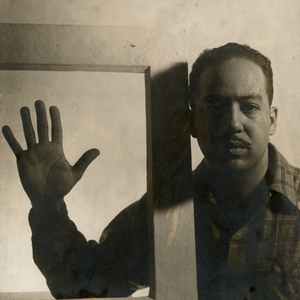
In 1948, Gordon Parks began his professional relationship with Life magazine that would last twenty-two years. For his first project, he proposed a series of pictures about the gang wars that were then plaguing Harlem, believing that if he could draw attention to the problem then perhaps it would be addressed through social programs or government intervention. As a result of his efforts, Parks gained the trust of one particular group of gang members and their leader, Leonard "Red" Jackson, and produced a series of pictures of them that are artful, emotive, poignant, touching, and sometimes shocking. From this larger body of work, twenty-one pictures were selected for reproduction in a graphic and adventurous layout in Life magazine.
At each step of the selection process Parks chose each shot, but as the picture editors at Life re-selected from his selection any intended narrative was complicated by another curatorial voice. Featuring contact sheets, proof prints and the published Life article, Gordon Parks: The Making of an Argument traces this editorial process and parses out the various voices and motives behind the production of the picture essay.
This publication and the accompanying exhibition were co-curated by The Gordon Parks Foundation and The New Orleans Museum of Art.
Exhibition: New Orleans Museum of Art, September 13, 2013 - January 17, 2014.
Upcoming: UC Berkeley Art Museum and Pacific Film Archive, September 27 - December 17, 2017.
Link to Steidl
EXCERPT
“Trapped . . .” When readers opened their November 1, 1948, issue of Life magazine to the article titled “Harlem Gang Leader,” this was the first word that greeted them, part of a caption under a compelling portrait of a young black man who gazed out a broken window. The word echoes across the darkened pages, reinforced by the ambitious graphic layout of the title-page spread, in which the portrait is superimposed on an urban landscape. As the text explains, the tower in the upper right corner of the picture “belongs to New York City’s famous Riverside Church. Stretching off to the left of it are the classic buildings of Columbia University and the elegant apartments of some of the city’s leading citizens. Nestled just below these, under the smoke and haze, are the crowded tenements and the cluttered, dreary streets of Harlem.” The portrait is of seventeen-year-old Leonard “Red” Jackson, leader of a Harlem gang called the Midtowners. . . This is a bleak view of Jackson’s existence among the shattered buildings and smoking landscape of post–World War II Harlem, a visual parallel for the equally despairing subtitle: “Red Jackson’s life is one of fear, frustration and violence.”
“Harlem Gang Leader” was Gordon Parks’ first major project for Life and therefore the first photo essay in the magazine by a black photographer. He had proposed a series of pictures about the gang wars plaguing Harlem at the time, believing that if he could draw attention to the problem then perhaps it would be addressed through social programs or private intervention. Parks gained the trust of a group of gang members and their leader, Red Jackson, and produced a series of pictures of them that are artful, emotive, poignant, touching, and sometimes shocking. From this larger body of work, which numbered hundreds of images, twenty-one pictures were selected for reproduction in Life. At each step of the selection process—as Parks chose each shot, or as the picture editors chose from his selection—any intended narrative was complicated by another editorial voice. When readers opened the pages of the magazine, the addition of text, and the readers’ own biases, further rendered the original argument into a fractured, multilayered affair. The process raises questions: What was the intended argument? And whose argument was it?
Russell Lord
Excerpt from “The Making of an Argument,” Gordon Parks: The Making of an Argument








